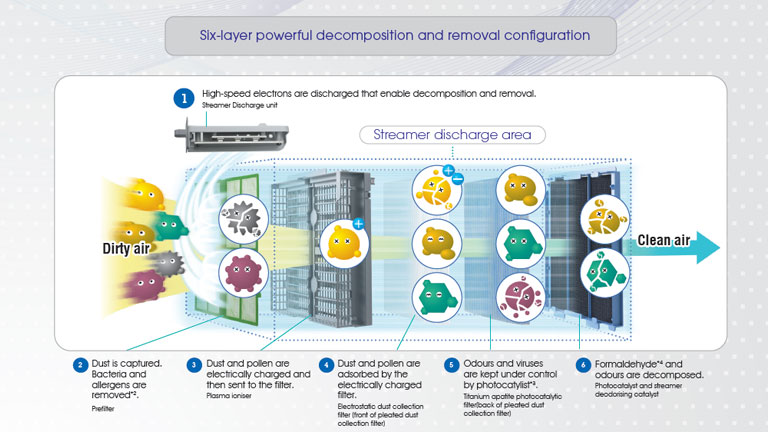Air filters are everywhere—home AC, department stores, factories. But how do they grab gunk out of the air? It’s not magic—just 5 simple ways the filter traps tiny particles:
- Interception: “Too Big to Slip By”
If a particle’s size means it can’t fit between the filter’s fibers (like a marble too big for fence gaps), the fiber catches and holds it.
- Inertial Impaction: “Can’t Slow Down” Crash
Heavier/fast-moving particles don’t stop easily—their inertia makes them slam into filter fibers and stick, even if air tries to carry them through.
- Diffusion: “Bouncy Small Guys” Trap
Super tiny particles bounce wildly (scientists call it Brownian motion, like a hyper kid in a crowd). This random movement makes them hit fibers and get trapped.
- Gravitational Sedimentation: “Gravity Pulls Down”
As particles pass through the filter, gravity tugs them onto fibers—faster than dust settling on a shelf, so they don’t float out with clean air.
- Electrostatic Effect: “Opposites Attract”

Filter fibers and particles sometimes have tiny electric charges (like a rubbed balloon sticking to a shirt). Opposite charges pull particles to fibers, trapping them gently but effectively.
Now, Filter Tech: Match It to Your Needs
Once you get the 5 methods, filter tech is simple—pick the right one for the job:
Filters for Different Jobs
We make filters with different performance levels: some target dust, others bacteria. The material uses thin fibers that let air flow easy but catch dust well—so there’s a filter for bedrooms, factories, and more.
Cleanroom Filters: Extra-Tight Protection
Cleanrooms (labs, hospitals) target particles 0.1–10 micrometers (smaller than a hair)—solid dust, liquid droplets, germs, pollen, fluff.
Key point: Most germs stick to dust. Trap dust, and you stop germs. High-efficiency filters work great here—they meet the clean air needs of labs/hospitals where germs can’t get in.
At the end of the day, air filters just separate gunk from air. Knowing how they work helps you pick the right one for your space.

